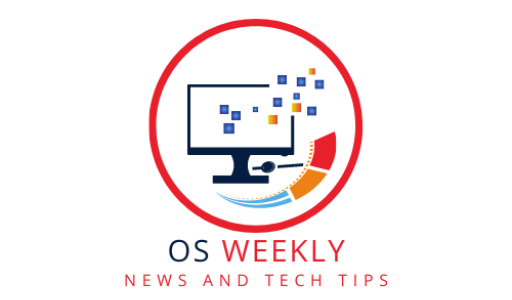Introduction
In an era where speed, efficiency, and effective resource management are more crucial than ever, lightweight operating systems are enjoying a hefty amount of attention. If you’re seeking to upgrade your old hardware or simply want a bloat-free computing experience, these OS might just hit the nail on the head for you. So, let’s dive into the crux and explore the best lightweight operating systems of 2023.
Best Lightweight Operating Systems 2023: Why the Buzz?
The increasing need for speed and efficiency in the computing world has pushed lightweight operating systems into the limelight. This Best lightweight operating systems 2023 review aims to cover the essentials about these lightweight champions, and why they have been stealing the show recently.
Lightweight operating systems are designed to consume fewer resources while delivering high efficiency. These systems are perfect for older or lower-spec hardware, giving these machines a new lease of life. But don’t be fooled! Even high-end machines can benefit from these lean systems, thanks to their clean, efficient environment.
The Essence of Lightweight Operating Systems
When we talk about lightweight, it’s not just about shedding some digital pounds. The defining aspect of these operating systems lies in their ability to deliver optimal performance while consuming minimal resources. Let’s break down what goes into making an OS lightweight:
CPU Usage
A lightweight OS is designed to put as little strain as possible on your CPU. This means your system can run faster and more efficiently.
Memory Footprint
The memory footprint of an OS is the amount of memory it uses to run. A smaller memory footprint translates into a faster system.
Storage Space
The smaller the OS, the less storage space it needs. This leaves more room for your apps and files.
The Utility of Lightweight Operating Systems
The importance of lightweight operating systems cannot be overstated. They extend the life of older hardware, reduce electronic waste, and are ideal for tasks that require low computational power. On top of that, they are highly customizable, allowing users to create a system that fits their specific needs like a glove. Here are some key reasons why lightweight OS are in vogue:
Breathes Life into Old Hardware
One of the key advantages of lightweight operating systems is that they can be installed on older hardware, thus extending its life. This not only reduces electronic waste but also saves money.
Ideal for Low-Power Tasks
Lightweight operating systems are ideal for tasks that don’t require a lot of computational power. This makes them perfect for everyday tasks like browsing the web or checking emails.
High Customizability
One of the hallmarks of many lightweight operating systems is their high degree of customizability. This allows users to create an operating system that is perfectly tailored to their needs.
The Contenders: Top 5 Lightweight Operating Systems of 2023
This year has seen some excellent lightweight operating systems, each bringing something unique to the table. So, without further ado, let’s dive into the best lightweight operating systems of 2023:
ArcaOS: The OS/2 Phoenix
ArcaOS is an operating system based on the final version of OS/2 released by IBM. It is a 32-Bit operating system that is actively developed and offers robust Unix compatibility, featuring a variety of lightweight applications and services.
Alpine Linux: The Security-focused
Alpine Linux is a lightweight Linux distribution built around musl libc and BusyBox. This operating system is best known for its security features and resource efficiency, making it ideal for servers or older hardware.
Lubuntu: The Lightweight Ubuntu
Lubuntu is an Ubuntu variant that uses LXQT for its default desktop environment, which is lighter and faster than GNOME (Ubuntu’s default desktop environment). It’s a great option for users who want a simple, efficient operating system without sacrificing usability.
Puppy Linux: The Ultralight Distro
Puppy Linux is an incredibly lightweight Linux distribution that can run entirely from RAM, freeing up resources and allowing for super-fast boot times. Despite its small size, Puppy Linux still offers a full suite of applications and utilities.
DietPi: The Minimalist’s Dream
DietPi is a highly optimised, extremely lightweight Debian-based Linux distribution. It’s designed to run on a variety of devices, from high-powered servers to tiny single-board computers like the Raspberry Pi.
FAQ’s
Q: What is a lightweight operating system?
A: A lightweight operating system is a system designed to consume fewer resources such as CPU, memory, and storage, thus providing efficient performance even on low-spec or old hardware.
Q: Why should I consider a lightweight operating system?
A: A lightweight OS is perfect for older hardware, extending its life and reducing e-waste. Moreover, these systems are efficient, fast, and highly customizable, fitting a broad spectrum of user needs.
Q: Is a lightweight OS only for older or low-spec hardware?
A: No, even high-end machines can benefit from a lightweight OS. Their efficiency and minimalistic design provide a clean and bloat-free computing environment.
Q: Can I perform all tasks on a lightweight OS as I do on a regular one?
A: Absolutely! Lightweight does not mean less functional. These systems are capable of performing all regular tasks like web browsing, email checking, document editing, and more.
Q: Are lightweight operating systems secure?
A: Yes, lightweight OSs like Alpine Linux focus heavily on security. However, just like with any OS, security also depends on user habits and the chosen software.
Q: Can I customize a lightweight operating system?
A: Indeed, you can. Many lightweight operating systems offer a high degree of customizability, allowing you to create an environment that perfectly suits your needs.
Conclusion
The best lightweight operating systems of 2023 offer a fantastic mix of efficiency, speed, and customizability. They breathe new life into old hardware, offer an optimal environment for low-power tasks, and reduce electronic waste. Whether you’re a casual user or a tech enthusiast, you’re sure to find a lightweight OS that suits your needs to a T.

